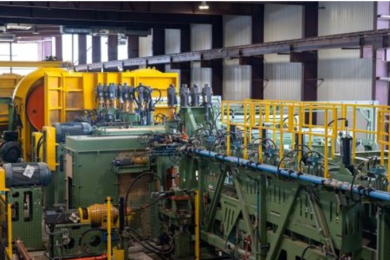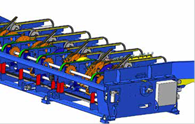New technology and big data open up new opportunities for forest harvesting entrepreneurs, allowing them to provide services for a variety of purposes.
Even today, harvesters gather a stunning amount of data for forestry needs, but they could do it for others, too. The machine could make available many new types of data from forests.
”This could be of interest to other sectors of society, and some might even be prepared to pay for it,” says Matti Rahikka, an expert on data protection and Executive Director of the DPO Finland company. Rahikka was one of the speakers at the Forest Day organised by the Trade Association of Finnish Forestry and Earth Moving Contractors.
Sensors attached to harvesters already gather data on distances, temperatures, humidity, air pressure, velocity, light, soil conditions, geography and location, as well as the amount and water content of snow.
According to Rahikka, a harvester could also function as the ground base of a drone. Computer vision is developing fast and also offers new possibilities for drones.
Drones can be programmed to follow animate or inanimate objects, they are able to fly along a pre-set path, avoiding obstacles and then returning to their path. They can reach a speed of 50 km/h and are able to fly even seven kilometres without re-charging.
A drone could estimate the amount of stout timber in a forest and the amount of smaller timber for pulp production. It could estimate the quality of the forest and, for example, check the condition of powerlines.
It can identify animal species and count the number of individuals per species. It can look for spruces suitable for Christmas trees, find mushrooms and berries and tell whether they are good for picking – for it can tell the difference between ripe and unripe berries even if shaded by leaves.
Movable base station to harvesting sites
When a harvester is transported into the forest, the same lorry could bring in a base station for broadband connections and an aggregate. ”This would provide a power source and broadband to the people living nearby,” says Rahikka.
At the moment, image processing software is able to identify individuals by their faces in a crowd, as well as their moods – and even different foods and their components on a plate.
360-degree cameras could be installed in forest machinery to monitor, for example, the condition of the forest and the trees spared during logging. Machine vision can tell whether the operator is having a break, repairing the machine or back in his seat. Or whether he, or she, is in a good mood.
The Internet of Things (IoT) is a network of all kinds of appliances, such as refrigerators, freezers, bicycles – of anything you can imagine – connected to the internet. When connected, these devices can then gather and transmit data wherever we want it.
The largest artefact in a forest is the harvester. ”Even today, it is full of computer and communication technology, but the time may have come for it to start serving not just the forest sector but the whole society,” says Rahikka.
New use for old NMT frequency
Sensors connected to the IoT network transmit data through the Narrow Band IoT (NBIoT), with a frequency of 450 megahertz. This was used earlier by analog mobile phone networks, such as the Nordic Mobile Telephone, the predecessor of the GSM network in the Nordic countries.
For IoT, the network has two important features. It has a very long range, several tens of kilometres. Secondly, it cannot transmit large quantities of data, but this is not a problem for sensors working in NBIoT.
As a result, these sensors do not need much energy and they may be located at quite a distance to the base station. At the moment such sensors may function for even ten years without re-charging, and their price is continuously decreasing.
Thus, the 450-megahertz network is best suited for appliances with moderate smarts, but it can accommodate a great number of them and across a large area. If the prices continue to drop, one day they might be scattered in the forest just like seeds to transmit data on the conditions in their environment for as long as the power supply will last.
Examples of existing NBIoT technologies include parking spaces indicating that they are free, problem spots in plumbing, remote sensing of heart rate, sensor-equipped collars for sheepto inform their location, or letterboxes and trash bins indicating they should be emptied.
Who owns the data?
But who owns the data gathered by a harvester? The data may be gathered for the harvester owner, but also sold to other parties.
According to Finnish legislation, you cannot own data, says Rahikka. “But you can own the device or appliance in which the data is stored. And in most cases sharing the data makes sense – whether or not you want someone to pay for it,” says Rahikka.
In Finland, there is by now an agreement on sharing the data gathered by forest machinery between forest industry companies, forest machine entrepreneurs and the manufacturers of forest machinery. The agreement aims at clarifying the rules of owning and sharing the data and at promoting new applications and services based on data gathered by forest machinery.
In addition to the forest industry companies, only one forest owner is a party to the agreement: the state forest company Metsähallitus. However, private forest owners are free to join in whenever they wish.
AUTHOR
Hannes Mäntyranta
https://smy.fi/en/artikkeli/harvesters-may-explode-the-volume-of-data-from-forests/




